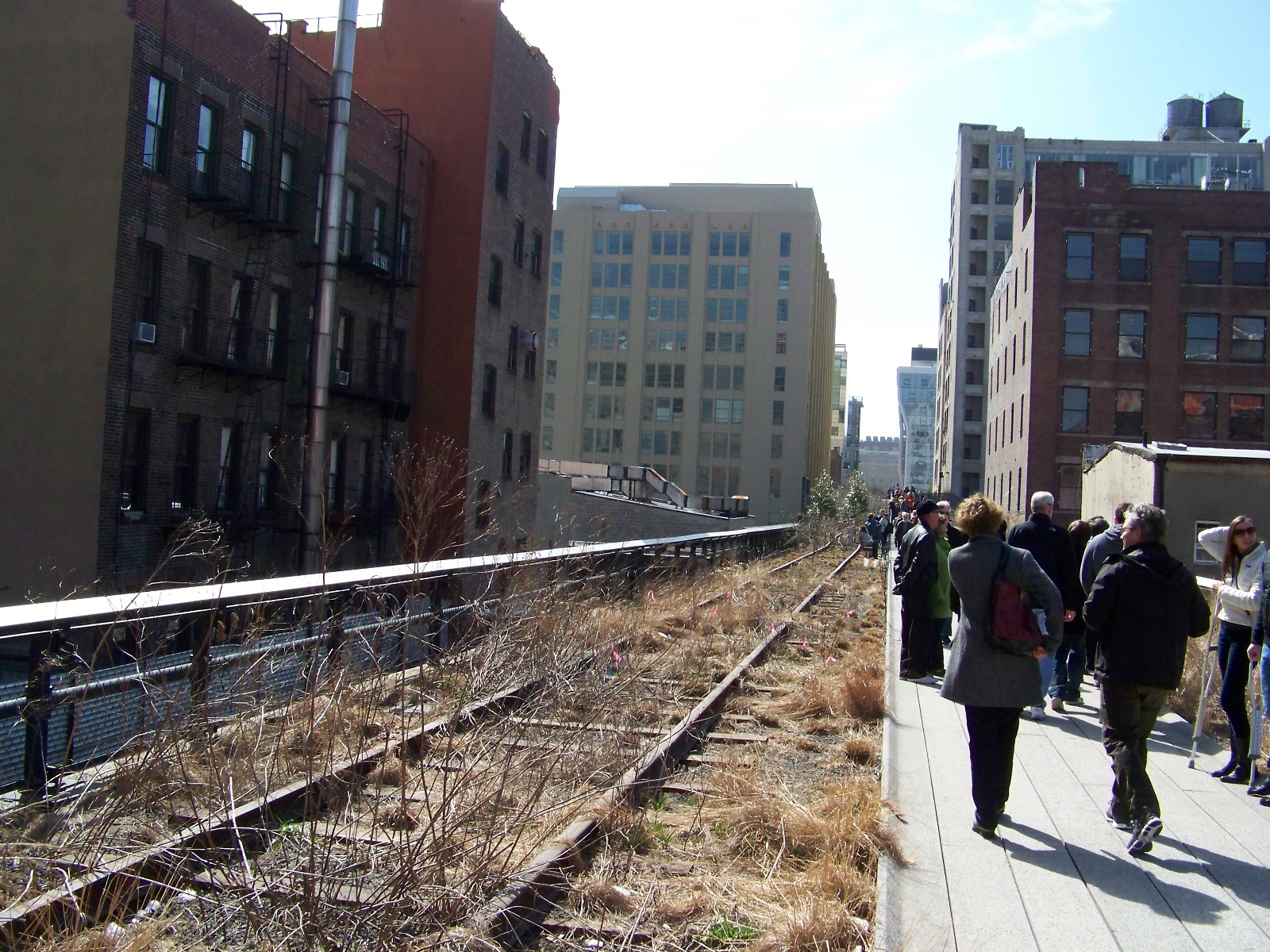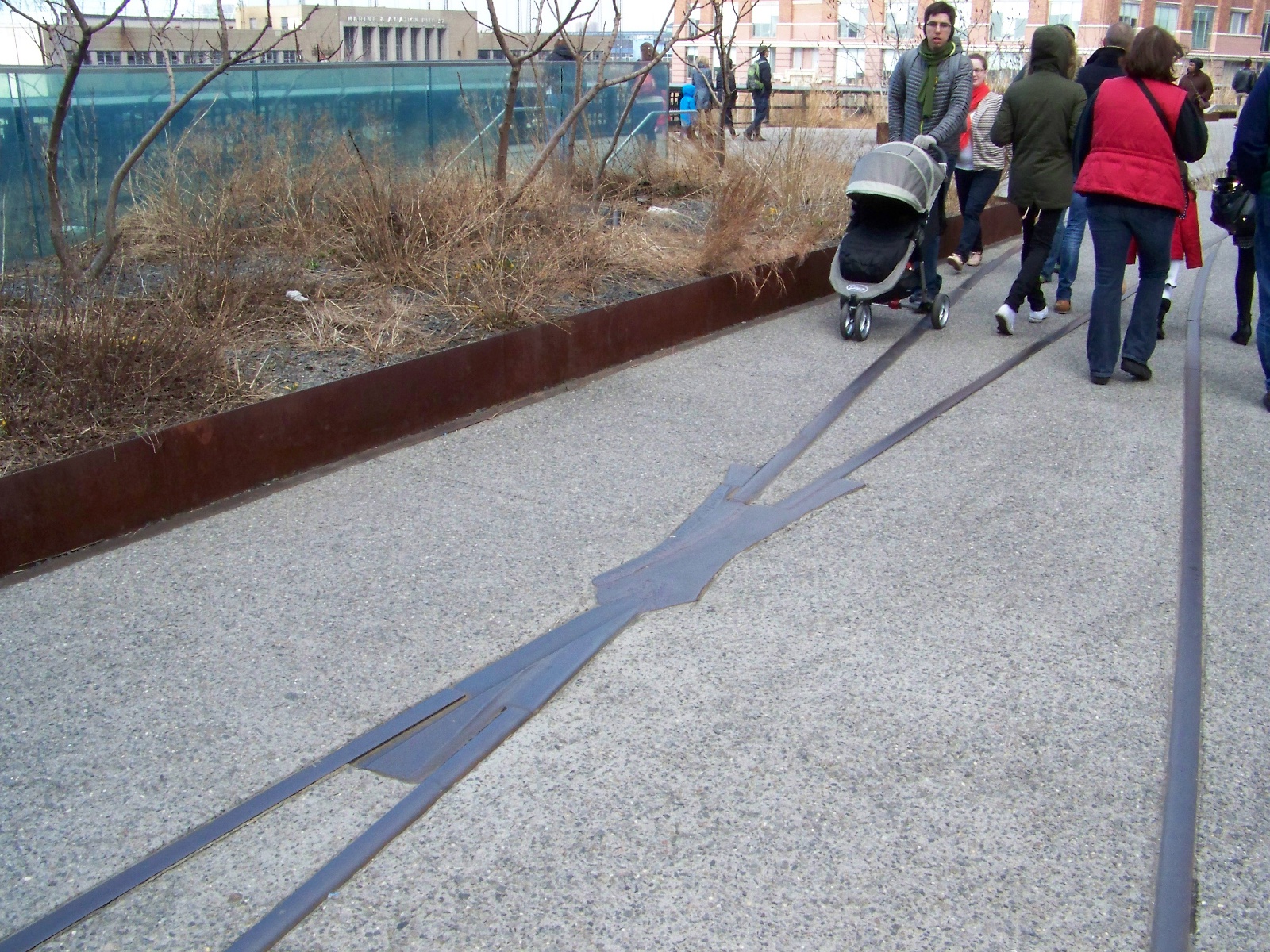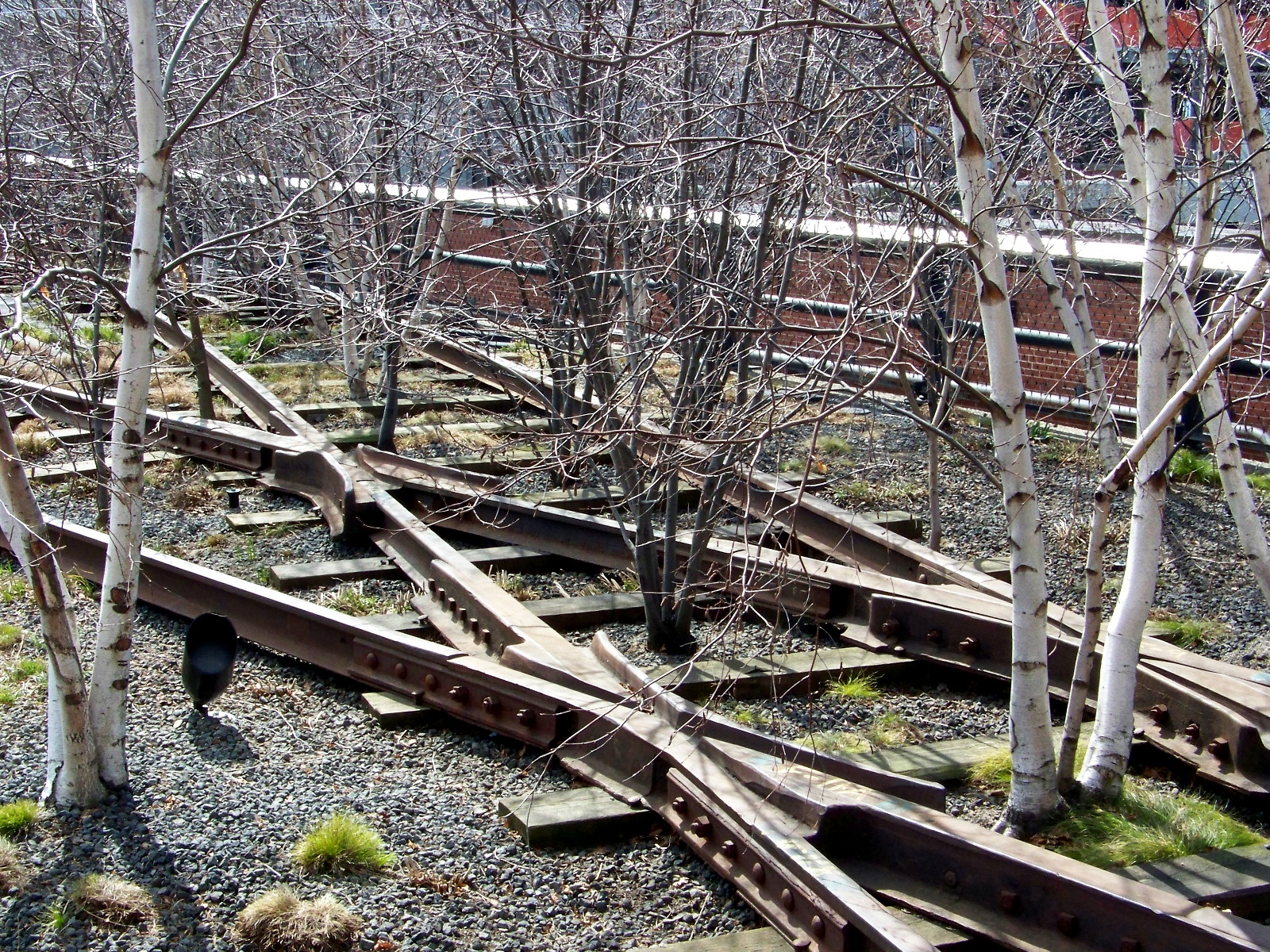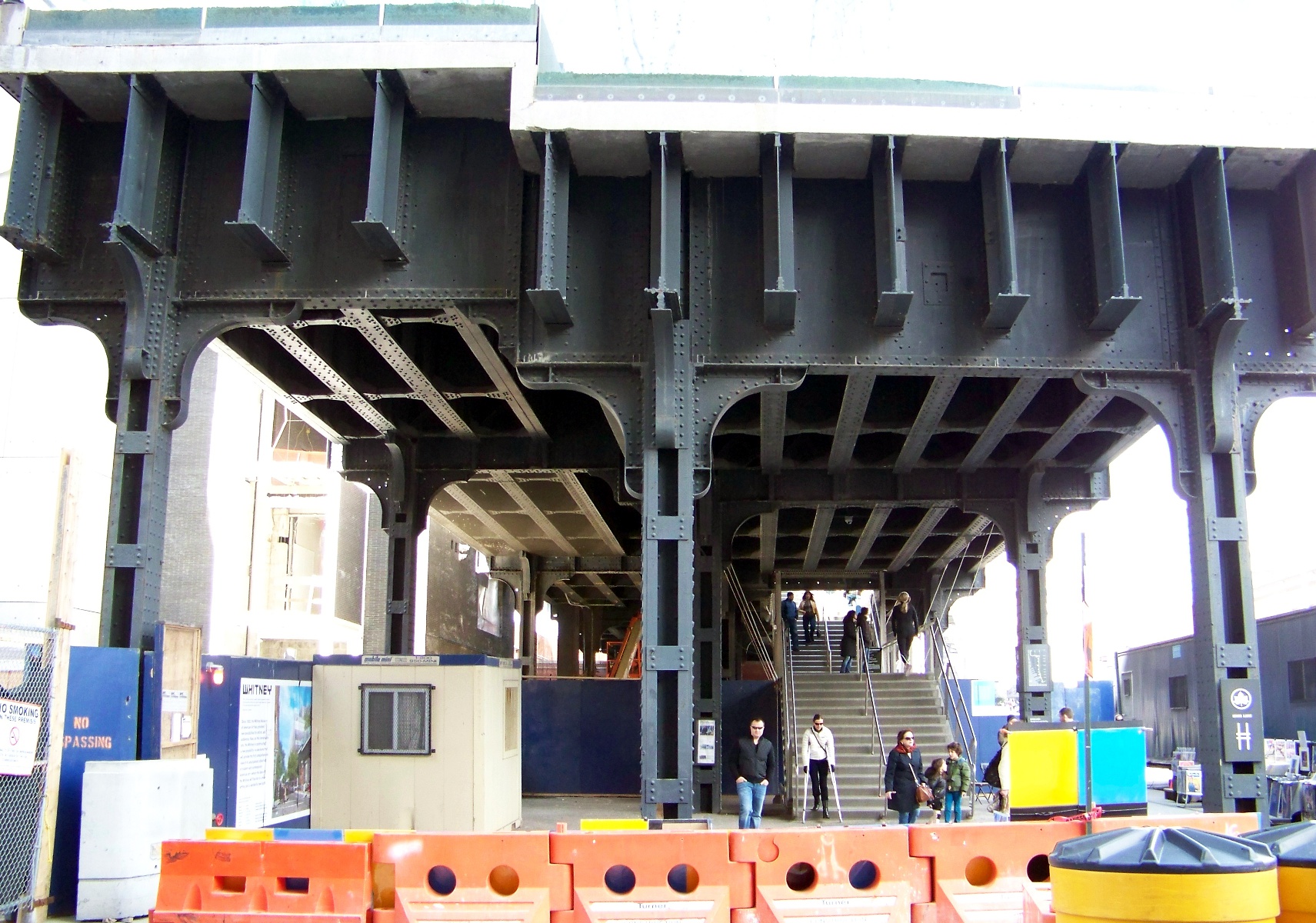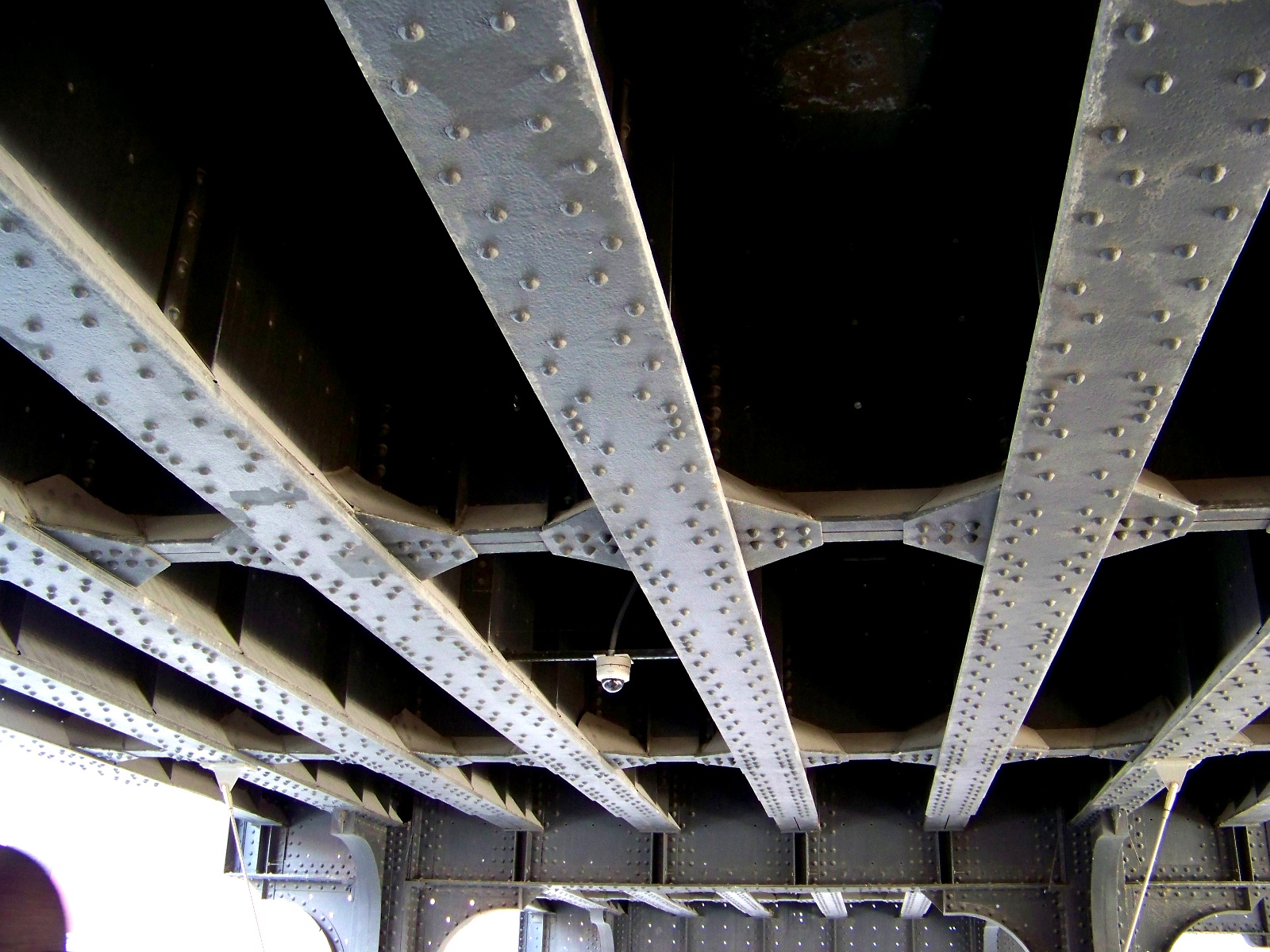New York City’s High Line is the most unusual park I have seen. The park occupies an abandoned rail bed in lower Manhattan. Reuse of redundant industrial spaces—what Kevin Lynch called “wasting well”—is not uncommon in cities in the deindustrializing West. What is unusual is that the park’s rail line is elevated above street level. It was originally built in the 1930s to remove dangerous freight trains from Manhattan’s crowded streets. Traffic on the line declined during the 1960s, and the last train ran on it in 1980. During its decades of disuse and abandonment, the rail bed grew over with wild vegetation. Threatened with demolition, the line was saved by a group known as Friends of the High Line, which successfully lobbied to have the abandoned structure converted into a park. The first phase of the High Line Park opened in 2009.
The High Line’s conversion into a park did not obscure the place’s past lives as a functioning rail line or a derelict structure. As far as possible, the redevelopers left the original rails in place, or reinstalled them. In some places, the rails run alongside the park’s paved pathway. Elsewhere, the rails have been integrated directly into the pavement.
The park’s landscaping emphasizes the post-industrial nature of the site. Trees grow between the ties of the abandoned tracks.
The current southern end of the High Line ends abruptly where the remainder of the original line was chopped off to make room for new development. The park’s developers left the cut open, allowing a glimpse of the heavy steel structure that was strong enough to hold freight trains above the street.
Since the early period of the republic, Americans have had a reputation for always wanting to throw away the old in favor of the new. This reputation is not undeserved. Americans built much of their industrial infrastructure cheaply, in the belief that something new and better would have come along by the time their infrastructure wore out. In the mid-nineteenth century, when the British were making railway viaducts out of stone so they would last forever, the Americans were making theirs out of wood, which was cheap but not durable. The ruins of abandoned rail lines can be seen all over the country, especially in places such as the mountain West where they have not been replaced by new development.1
In the latter half of the twentieth century, some Americans finally started to realize that the Old, as well as the New, has use and value. The High Line Park is one example of the Old being put to a creative and interesting New use.
- Arnold Pacey contrasts the nineteenth-century British interest in monumentality and permanence with the contemporary American obsession with newness in The Maze of Ingenuity: Ideas and Idealism in the Development of Technology, 2nd ed. (Cambridge, MA: MIT Press, 1992), 209-15. [↩]


